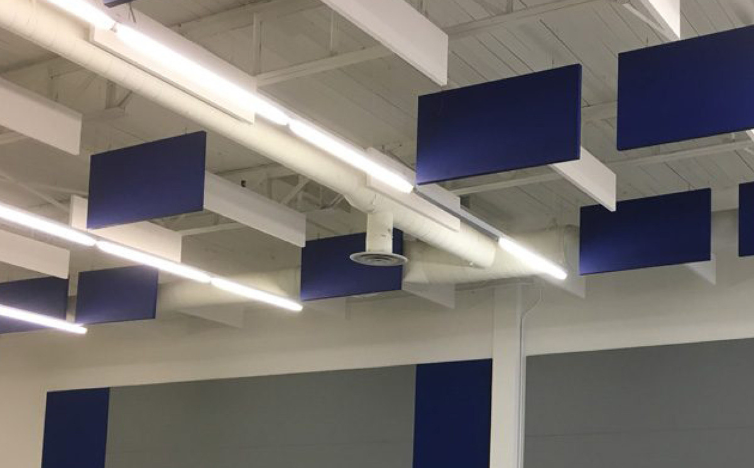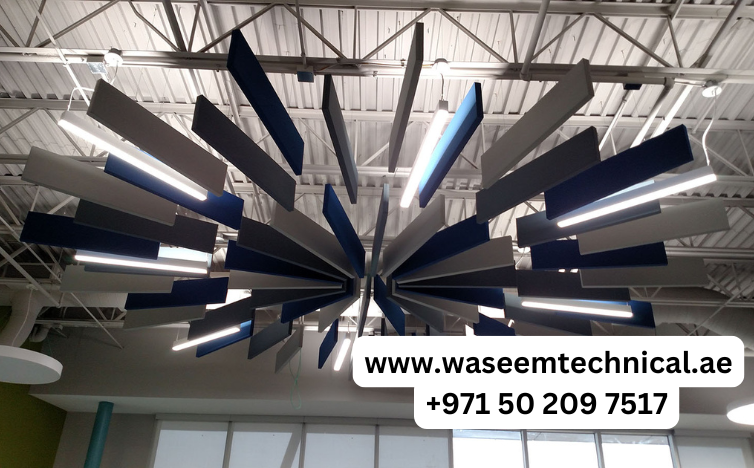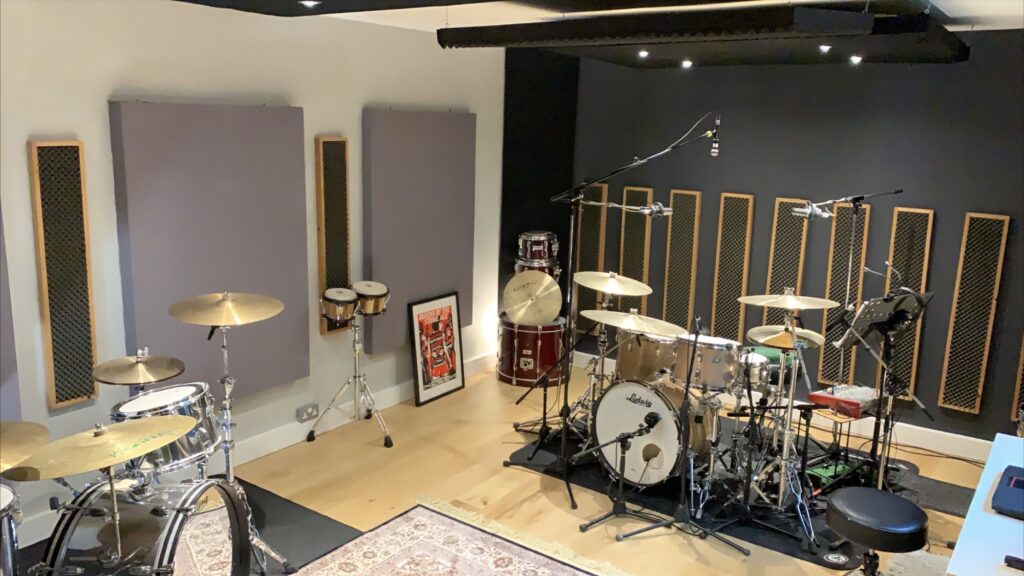Acoustic baffles are crucial for controlling sound in various environments, from offices and schools to theaters and restaurants. They are designed to reduce noise levels by absorbing sound, improving the overall acoustics of a room. When selecting acoustic baffles, two common installation types are available but which is best for your space? vertical vs horizontal baffles. This article breaks down the differences, benefits, and best applications for each type.
What Are Acoustic Baffles?
Acoustic baffles are sound-absorbing panels suspended from ceilings. They reduce echo and reverberation, helping to create a quieter and more comfortable environment. These baffles come in two main orientations: vertical and horizontal, each with its own advantages depending on the design and acoustic needs of the space.

Vertical Acoustic Baffles: Benefits and Applications
Vertical acoustic baffles are installed hanging from the ceiling, like fins, with the narrow edges facing the floor and ceiling. These baffles are ideal for rooms with high ceilings and open spaces.
Benefits of Vertical Baffles:
- Maximized Sound Absorption: Vertical baffles are highly effective at absorbing sound waves coming from different directions, especially in tall spaces where sound travels upward.
- Space Efficiency: They take up minimal space since they hang vertically, allowing for better air circulation and less interference with lighting fixtures.
- Aesthetic Flexibility: Vertical baffles come in various shapes, sizes, and colors, making it easy to blend with the design of modern or industrial interiors.
Ideal Applications:
- Office Spaces: Vertical baffles help control noise in open-plan offices.
- Theaters and Auditoriums: They manage sound reflection in large, tall areas.
- Gymnasiums: Vertical baffles reduce echo in spacious sports facilities.
See Also: How Do Sound Baffles Work? (A Comprehensive Guide)
Horizontal Acoustic Baffles: Benefits and Applications
Horizontal acoustic baffles are installed parallel to the ceiling, covering a larger surface area. They are perfect for spaces where sound control across large spaces is a priority.
Benefits of Horizontal Baffles:
- Wider Sound Coverage: Horizontal baffles absorb sound over a broader area, which makes them effective in large, low-ceiling rooms.
- Improved Ceiling Acoustics: When installed horizontally, they reduce the vertical bounce of sound, minimizing echo in enclosed spaces.
- Enhanced Lighting Control: Horizontal baffles can also serve as light diffusers, controlling the direction and diffusion of light.
Ideal Applications:
- Restaurants and Cafés: Horizontal baffles help control ambient noise, improving customer experience.
- Classrooms: They manage noise levels in large teaching areas with low ceilings.
- Conference Rooms: Horizontal baffles help create a quieter, more professional environment for meetings.
Which Is Best for Your Space?
When deciding between vertical and horizontal baffles, consider the specific needs of your space. Here are some factors to keep in mind:
- Ceiling Height: If your space has high ceilings, vertical baffles may be more effective at controlling sound. In spaces with lower ceilings, horizontal baffles provide better coverage.
- Noise Source: Vertical baffles are better suited for managing noise in open spaces where sound comes from multiple directions, while horizontal baffles work well in smaller areas with concentrated sound sources.
- Aesthetic and Design: Both options come in a variety of styles, but the orientation should match the visual and functional goals of your space.
Call us: Contact Waseem Technical Soundproofing Expert in Dubai For Soundproofing: +971 50 209 7517
Conclusion
Choosing between vertical and horizontal acoustic baffles depends on your space’s layout, noise levels, and design preferences. Vertical baffles are ideal for high, open areas, while horizontal baffles excel in smaller, enclosed environments. Both options offer effective sound control, but selecting the right one for your space ensures the best acoustic performance.




